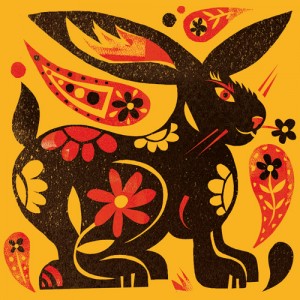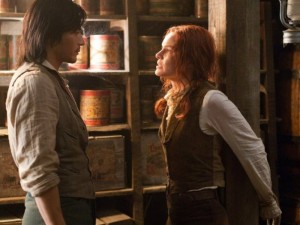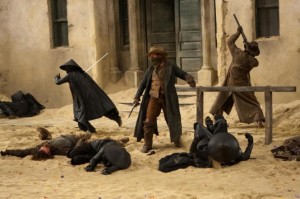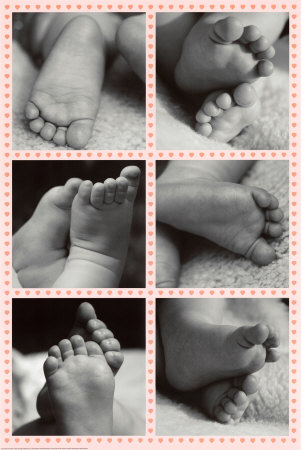National Living Treasures
/ I really don't know what to do. Paulie Zink has another video up on Youtube. His Daoyin is the link between Daoist hermit rituals, Shaolin, the martial theater tradition, and internal martial arts. I don't know of anyone else that has even come close to receiving the complete transmission of this knowledge. Paulie Zink has it, yet hardly anyone appreciates that fact, even worse, I don't think he appreciates it! For crying out loud, why call it Yin Yoga? You're killing me.
I really don't know what to do. Paulie Zink has another video up on Youtube. His Daoyin is the link between Daoist hermit rituals, Shaolin, the martial theater tradition, and internal martial arts. I don't know of anyone else that has even come close to receiving the complete transmission of this knowledge. Paulie Zink has it, yet hardly anyone appreciates that fact, even worse, I don't think he appreciates it! For crying out loud, why call it Yin Yoga? You're killing me.For those who have missed this story, here are some of the details. Paulie Zink learned Daoyin and Monkey Kungfu in Los Angels in the late '70's early 80's from a guy, Cho Chat Ling who learned it from his father and taught no one else. The Monkey Kungfu is made up of 5 different Monkey forms and qualities all of which Paulie then taught to his close friend Michael Matsuda. I interviewed Michael last year in Santa Clarita and he told me that he never learned any of the Daoyin and that Monkey Kungfu and Daoyin were completely different systems. It's my opinion that Monkey is one of about 20 Daoyin animal movements, but it happens to be by far the most developed of the animals because Monkey was such a popular stage role in every part of China. Michael dismissed this notion by saying that it was purely a martial arts system. He backed up this statement by telling me that a group of Paulie Zink's teacher's father's Kungfu cousin's disciples (got that?) came to visit Los Angels from Hong Kong twice in the 1980's to compete in tournaments and Michael got to travel with them. He said they were superb fighters, unlike Paulie Zink who never had an interest in fighting. But Michael also said that none of the visiting group knew Daoyin, and none of them knew all 5 monkey forms either. That means Michael is also a National Living Treasure and more people need to get down there and study with him. I took his class-- that's some serious gongfu! (Buy a video!) (There is more of Michael's argument here, but the idea that there was some wall of separation between fighting skill and performing skill does not stand up to historical scrutiny.)
The purpose of Daoyin is very simply to reveal the freedom of our true nature. That's the purpose, or I could say the fruition. One of the reasons this thing has gotten so screwed up is that people are always confusing the method with the fruition. They think that physical looseness and flexibility is the fruition, when in fact it is only the method, and only a small part of the method at that.
The method of Daoyin is very simply to distill what is inside from what is outside so that we might become aware of this other thing, call it emptiness, call it freedom, call it original qi, call immortality, call it whatever you want. The world outside of us is always pushing or pulling, and the world inside of us is always pushing or pulling. The premise of Daoyin is that there is a place in between inside and outside which is always pure and always free.
Thinking back to how Daoyin was created, there were two ways in. One way was to cultivate extraordinarily plain stillness and emptiness, and from that experience begin moving. The other way was to tap into the spontaneity of the animal mind, to move, think and feel like a wild animal. In order to have the complete Daoyin 'experience' you would have to go in one way and find your way out the other! So in a sense, Daoyin can't really be taught, it has to be found.
One of the many differences between Yoga and Daoyin is that Daoyin has what we call in the martial arts world, "external conditioning." Somewhere in the middle (1:26) you see Paulie putting his legs together and flopping them side to side, whacking them on the ground. His torso becomes like water and his legs like someone else's legs. Who cares? Just throw them around. This is one of the doorways in.
Later, when he does the pig, he is banging his knees on the ground in a rapid fire vibration. Then near the end he does the caterpillar (changing into a butterfly) which looks totally smooth, but I've taught it to kids a lot and I always have to explain that "gongfu teachers like me are the model of toughness and dispassion!" and "I don't care if you get little purple bruises--the cure is more practice!"
In the video he starts with the frog, then the stump, the tree, then the crab, the transition to lotus sitting, then the pig (at 1:59, I've never seen that before!), then the caterpillar into the butterfly.
The music is barely survivable. It should really be done on a hard, unforgiving surface. The production quality is even lower than the stuff I do. I'm pretty sure that most people will look at this video and say, it doesn't measure up to this or that standard--but that's partly because people don't know what they are looking at.
He is doing only a tiny fraction of each animal. Viewers should know that all the animals have meditation postures, and they all come totally to life, like the pig did for about one second (1:59). The pig is particularly interesting because like the dog, it was the lowest status role there was in the Chinese theater tradition. Think about it, to be an actor was lower status than a prostitute or a thief! Playing the role of a dog or a pig was really low. The animal role specialists would draw straws to see who the unlucky guy was who would have to play the pig!
Given that Paulie's teacher probably inherited a really low social status, it isn't all that surprising that he would want to abandon it himself and go into the import-export business (no one actually knows where he is now), but he obviously valued it enough to believe that it should be passed on to someone in it's complete form. I can even understand wanting to free it from it's original Daoist/Theater context, even if I think that was short sited and highly problematic given that Paulie does not seem to understand what a treasure he is or has.




 The Laundry Warrior is the correct and original name of a new movie which just came out under the bland title
The Laundry Warrior is the correct and original name of a new movie which just came out under the bland title  The fight choreography is good and the love interest part of the story is as good as it gets. Did I mention that the clothes are amazing? Oh yeah, the fights are mostly with swords, a little old-school Zatoichi technique and a little slow motion computer animation like the movie 300. The Koreans can all jump really high, especially out of water, it is almost like flying but they seem to come down hard. This style of fantasy fighting is cool and can really work but they really should consult me on the nature of momentum. The best fighters in the world, cats, do fight in the air! But cats must spiral and twist. Cats use rotational momentum combined with maximum internal power to fight. The films fighters rely too much on force generated from turning around a vertical center-line. Folks, if you are going to spend millions of dollars on an international project that employs people from Korea, Japan, the US, New Zealand, India and Australia--then I demand perfection!
The fight choreography is good and the love interest part of the story is as good as it gets. Did I mention that the clothes are amazing? Oh yeah, the fights are mostly with swords, a little old-school Zatoichi technique and a little slow motion computer animation like the movie 300. The Koreans can all jump really high, especially out of water, it is almost like flying but they seem to come down hard. This style of fantasy fighting is cool and can really work but they really should consult me on the nature of momentum. The best fighters in the world, cats, do fight in the air! But cats must spiral and twist. Cats use rotational momentum combined with maximum internal power to fight. The films fighters rely too much on force generated from turning around a vertical center-line. Folks, if you are going to spend millions of dollars on an international project that employs people from Korea, Japan, the US, New Zealand, India and Australia--then I demand perfection! Now to the important stuff. Every little kid knows that the outfit, the kung fu or karate uniform, is a key component of the art. I often hear parents tell me, "My son really wanted to do kungfu and begged me for a long time, but when I finally signed him up and he started taking classes I realized what he really wanted was the outfit not the hard work!" Kids get shamed about this pretty early. They are told that the uniform is just a vain symbol and that what really matters is doing forms. Later they shame you about that and tell you that it's not the forms it's the applications and techniques that matter. And if you make it that far you are likely to get shamed about those too, sparring and competitions are what really matter! And if you make it through all that it's all about philosophy and health. It took me many years to realize that the observations of little kids were correct all along. The power is in the outfit!
Now to the important stuff. Every little kid knows that the outfit, the kung fu or karate uniform, is a key component of the art. I often hear parents tell me, "My son really wanted to do kungfu and begged me for a long time, but when I finally signed him up and he started taking classes I realized what he really wanted was the outfit not the hard work!" Kids get shamed about this pretty early. They are told that the uniform is just a vain symbol and that what really matters is doing forms. Later they shame you about that and tell you that it's not the forms it's the applications and techniques that matter. And if you make it that far you are likely to get shamed about those too, sparring and competitions are what really matter! And if you make it through all that it's all about philosophy and health. It took me many years to realize that the observations of little kids were correct all along. The power is in the outfit! Adults think they are more savvy. They are less likely to be 'fooled' by an ethnic costume. But growing a beard doubled my credibility teaching at the college level. Imagine what a couple of inches in eyebrow length could do? What you wear and how you wear it has a profound effect on teaching. Clothing conveys ones degree of seriousness, whimsy, toughness, or irony better than anything which can be said or written on a white board.
Adults think they are more savvy. They are less likely to be 'fooled' by an ethnic costume. But growing a beard doubled my credibility teaching at the college level. Imagine what a couple of inches in eyebrow length could do? What you wear and how you wear it has a profound effect on teaching. Clothing conveys ones degree of seriousness, whimsy, toughness, or irony better than anything which can be said or written on a white board.
 I almost always avoid politics on my blog, most of what we call politics is simply too shallow to warrant any overlap with the general topic of this blog. I also do my best to avoid seeming rude, rudeness in other people often turns me off, why would I subject my readers to that? But I'm going to make a small exception for a big issue. (Exceptions prove the rule, right?)
I almost always avoid politics on my blog, most of what we call politics is simply too shallow to warrant any overlap with the general topic of this blog. I also do my best to avoid seeming rude, rudeness in other people often turns me off, why would I subject my readers to that? But I'm going to make a small exception for a big issue. (Exceptions prove the rule, right?) It is a staple of Chinese movement and religious studies that the tongue should be on the roof of the mouth. In Daoist ritual and ritual meditation the tip of the tongue is sometimes used to draw talisman on the roof of the mouth. But in Zouwang (sitting and forgetting) the basic emptiness meditation practice, which is very much like Zen, part of the posture instructions for stillness include putting the tip of the tongue on the roof of the mouth behind the teeth. I’ve also heard people say to put the tongue on the soft pallet. The identical instruction is standard in Tai Chi and other internal martial arts and qigong classes.
It is a staple of Chinese movement and religious studies that the tongue should be on the roof of the mouth. In Daoist ritual and ritual meditation the tip of the tongue is sometimes used to draw talisman on the roof of the mouth. But in Zouwang (sitting and forgetting) the basic emptiness meditation practice, which is very much like Zen, part of the posture instructions for stillness include putting the tip of the tongue on the roof of the mouth behind the teeth. I’ve also heard people say to put the tongue on the soft pallet. The identical instruction is standard in Tai Chi and other internal martial arts and qigong classes. Much of learning in traditional Chinese martial arts involves re-imagining. A subset of learning involves re-naming. The purpose of re-naming is to re-imagine a process or practice you are already familiar with. We could speculate that the imagination has a built in deterioration and mutation mechanism for anything which has become fixed. The imagination requires regular refreshing to function properly.
Much of learning in traditional Chinese martial arts involves re-imagining. A subset of learning involves re-naming. The purpose of re-naming is to re-imagine a process or practice you are already familiar with. We could speculate that the imagination has a built in deterioration and mutation mechanism for anything which has become fixed. The imagination requires regular refreshing to function properly.